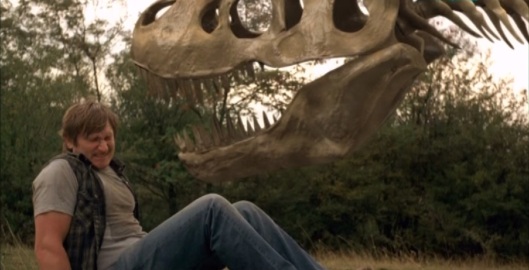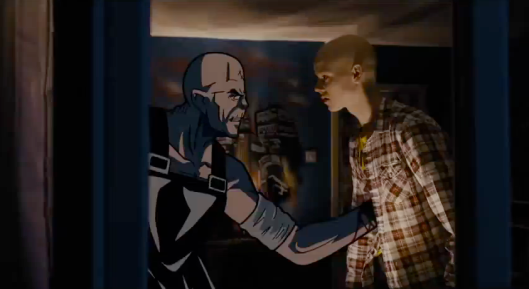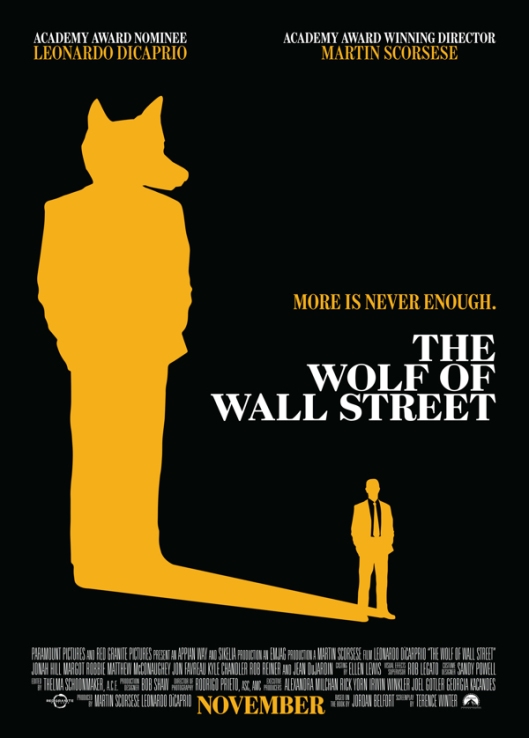
Disney’s Air Bud series is a mostly entertaining quintet that is aimed squarely at a family audience, although parents might not be as enthralled as their children will be. The first two movies received a theatrical release, while the rest were released direct-to-video. After the last movie, Disney decided to shift the focus to Buddy’s offspring, and the Air Buddies franchise was created. While that series continues to endure – the eighth in the series is due for release in 2015 – looking back over their predecessors reveals a series that for the most part tried to maintain a simple, unfussy approach to the stories, and kept Buddy’s sporting activities as credible as possible.
Air Bud (1997)

D: Charles Martin Smith / 98m
Cast: Michael Jeter, Kevin Zegers, Wendy Makkena, Bill Cobbs, Eric Christmas, Nicola Cavendish, Shayn Solberg, Brendan Fletcher, Norman Browning
Like a lot of low-budget Disney fare from the Nineties, Air Bud is a likeable tale of a young boy, Josh Framm (Zegers) coming to live in the small town of Fernfield and befriending an apparently stray dog. The twist here is that the dog, a friendly golden retriever, is, like Josh, a whiz at playing basketball.
The dog is christened Buddy and after a few mishaps on the way to convincing his mother Jackie (Makkena) to keep him, Buddy helps Josh regain the confidence he lost when his father died the year before. And when the school basketball team finds itself a player short, Josh repays Buddy’s help by getting him on the team. Needless to say, Buddy proves to be a star player and it’s onward to the championship final, where… well, you can guess the rest.
But there is a fly in the ointment, in the form of Buddy’s real owner, Norm Snively (Jeter). Norm is a clown, and at the movie’s beginning you see just how bad he is at it; only Buddy wins any applause from the children’s party they’re at. Norm wants Buddy back and sues for custody. Cue a courthouse sequence that is both funny and funnier still, largely due to loopy Judge Cranfield (Christmas).

The cast as a whole is uniformly good, with Christmas being matched by the excellent Jeter. Zegers – just thirteen but appearing in his eighth movie – gives an affecting performance even though he’s largely required to be moody and defensive for the first half of the movie. The script avoids the usual syrupy sentimentality that so often mars Disney’s attempts at family fare, and Smith’s direction enables the cast to do just that bit more with characters that might otherwise have appeared as paper-thin stereotypes.
Of course, Air Bud was the first of five movies, and if you watch them back to back you’ll notice some interesting continuity issues that crop up as the series continues. In this movie, keep a close eye on Makkena; this is her only appearance in the series, and it’s worth noting how the producers kept her replacements looking much the same. Also, look out for the location of the town marker: there’s no prizes for guessing if it’s still in the same place in Air Bud: Golden Receiver.
Rating: 6/10 – a pleasing start to the franchise with winning performances and a slightly goofy nature; but shame on Disney for putting another dog altogether on the poster!
Air Bud: Golden Receiver (1998)

D: Richard Martin / 90m
Cast: Kevin Zegers, Cynthia Stevenson, Gregory Harrison, Nora Dunn, Perry Anzilotti, Robert Costanzo, Shayn Solberg, Suzanne Ristic, Alyson MacLaren, Jaida Hay
Having excelled at basketball, this time around Josh tries out for the school football team after finding out he’s got a pretty good throwing arm. When the team’s star quarterback is injured, guess who steps up to take his place? You can’t? Hmmm… Buddy joins the team as well (the football powers-that-be seem to have the same lack of restrictions about players from a different species as the basketball powers-that-be have). He’s a great catcher of the ball (naturally), and together they help the team reach… the championship final!
When it comes to the sports side of things, Air Bud: Golden Receiver is all very predictable, and it looks to have been a deliberate move on the producers’ part. It’s only in Air Bud Spikes Back that the sport is the whole of the plot; here it’s secondary to Jackie (Stevenson) and her romance with new local vet Patrick (Harrison). Josh isn’t sure about the relationship, and while he doesn’t go quite so far as to try and sabotage it – he does actually like Patrick – there are still enough wobbles along the way before everything works out as smoothly as expected. There’s also a third storyline involving a couple of Russian circus owners who are stealing animals for their show, and want Buddy for their star attraction. They make a couple of attempts to abduct him but fail so that Josh and Buddy can make it to the championship final – which is when Buddy finally gets dognapped. Cue a frantic race against time to rescue Buddy and win the game.

While there was an element of slapstick in the first movie, it was legitimised by having the villain be a clown. Here the two Russians, Natalya (Dunn) and Popov (Anzilotti) are so inept and so stupid they make a great case for involuntary euthanasia. Why the producers decided to make them so stupid is a mystery as their inanity hurts the movie tremendously; rather than adding humour to the movie, they just leave the viewer wishing their scenes had been cut out altogether. Where humour has been successfully added is at the championship game, where in an inspired move, Tim Conway and Dick Martin play two match commentators, foreshadowing the type of one’s barmy/one’s serious interaction seen in movies such as Best in Show (2000).
On the more serious side of things, the romance between Jackie and Patrick is handled well, and both Stevenson and Harrison keep it all grounded. They both underplay the emotional aspect effectively, so much so that when Patrick has to decide whether or not to take up a job offer out of state, you’re never quite sure if he’s going to stay or not.
The script – Russians aside – is effective and expands on Air Bud while keeping the core elements that made that movie work so well. Buddy and Josh still make for an attractive couple – there it’s been said! – and Martin’s direction keeps the action moving along nicely.
Back in Continuity Corner, Stevenson fits the mould created by Makkena, but now remember Harrison and see how his looks pan out with his successors in the rest of the series (and two of the Air Buddies movies). And as for the town marker, isn’t it in a different place this time, a bit nearer to the centre of town, perhaps? Hmmm…
Rating: 6/10 – an effective sequel let down by its simpleton villains; well-staged and amusing with good performances all round.
Air Bud: World Pup (2001)

D: Bill Bannerman / 83m
Cast: Kevin Zegers, Caitlin Wachs, Dale Midkiff, Chilton Crane, Brittany Paige Bouck, Miguel Sandoval, Shayn Solberg, Chantal Strand, Martin Ferrero, Don McMillan, Duncan Regehr, Patricia Idlette, Fred Keating
With the predictability of the Air Bud formula firmly entrenched from the outset – dog and master find they have a natural aptitude for ball-based sports and lead local team to a championship final with even further predictable results – the producers had begun to look at ways of focusing more on the characters rather than Buddy himself. That said, with Air Bud: World Pup, Buddy has a larger role than in Air Bud: Golden Receiver, and the movie, while still as predictable as all the others in the series, is one of the more enjoyable entries.
Here, Buddy meets Molly and promptly falls head over paws in love. Soon he’s sneaking out at night and returning the next morning. Only Josh’s younger sister Andrea (Wachs) notices as he passes her window on his way out each night. Could Buddy be spending some lurve time with Molly?
Meanwhile, Josh is beginning a fledgling relationship himself with Molly’s owner, Emma (Bouck). She and her father (Regehr) have just moved to Fernfield from England and Emma is keen to try out for the school soccer team. When the team proves to be a player short (and then another), guess who steps in to make up the numbers and take the team to the championship final? (You can’t? Really…?)

There’s a lot to enjoy here. Josh and Emma’s romance is handled well but stops short of their having any actual physical contact (not even a kiss, producers? Come on!). Zegers and Bouck are a good match and they have a relaxed chemistry together; their scenes are nicely played. Wachs is good too as the now (much) older Andrea. She and best friend Tammy (Strand) discover the reason for Buddy’s nocturnal excursions, and play a larger part in the general storyline. All of which relegates Jackie (Crane, subbing for Cynthia Stevenson but given very little to do in comparison) and (now) stepdad Patrick (Midkiff) to the sidelines. Sandoval is good as Coach Montoya, and this movie’s villains, Snerbert (Ferrero) and Webster (McMillan), are perhaps the least annoying in the series as a whole; McMillan at least displays an aptitude for comic timing.
There are various subplots: the team is temporarily suspended from the tournament because of Emma and Buddy’s participation; the villains’ plot to snatch Molly which prompts the standard race against time to get Josh, Emma and Buddy to the final in time; Josh’s friend Tom’s attempts to impress Emma; and Emma’s dad’s financial problems.
On the continuity front, Crane makes for a low-key Jackie, and only resembles Makkena and Stevenson in long shot; the movie opens with Jackie and Patrick getting married; Jay Brazeau reprises his role from the first two movies as a referee, while Frank C. Turner (a bailiff in Air Bud) reprises his role as a linesman in Air Bud: Golden Receiver; Andrea ages at least six years from the time of the previous movie; Midkiff looks completely unlike Gregory Harrison; the front of the Framm house has grown balconies; and that pesky town marker is now in the centre of town.
This was to be the last Air Bud movie where Josh would take centre stage. It would also be the last Air Bud movie where there was as much focus on the characters, or any attempt to develop them further. It’s a shame as, predictability aside, the series has been enjoyable and fun to watch.
Rating: 6/10 – perhaps the best entry in the series, though a little too reliant on the type of obvious humour that would scupper future instalments.
Air Bud: Seventh Inning Fetch (2002)

D: Robert Vince / 93m
Cast: Caitlin Wachs, Cynthia Stevenson, Richard Karn, Molly Hagan, Patrick Cranshaw, Chantal Strand, Jay Brazeau, Frank C. Turner, Doug Funk, Kevin Zegers, Shayn Solberg
From this point on it’s easy to dismiss the Air Bud series as a series gone too far, and certainly this entry fails to add anything appreciably new to the format. Instead it takes away a major character, Josh, and bumps his younger sister Andrea into the main role. Josh is off to college, leaving Andrea feeling left out while Jackie (the returning Stevenson) and stepdad Patrick (Karn) concentrate on new addition to the Framm household, baby brother Noah. Looking for something to occupy her time she lets best friend Tammy talk her into trying out for the school baseball team. Unlike Josh, Andrea isn’t a natural and only makes it onto the team through Tammy’s intervention. As the season progresses, she proves time and again how bad she is until Buddy helps her in the same way he did with Josh in the first movie. Andrea improves her game, takes over from the injured Tammy – up tip now the team’s star player – and gets Buddy on the team as well. They get all the way to the championship final and… well, you know the rest.

As usual there are villains that are up to no good, this time around in the form of Professor Siles (Brazeau) and his accomplice Carlton (Turner). Siles is intent on kidnapping Buddy and his offspring in the hope of isolating the “super gene” that makes all of them so good at sports. Then he can sell it to “professional athletes all round the world”. One by one they abduct four of Buddy’s puppies – Shooter, Zack, Duke and Striker – and Buddy before being brought to justice by Sheriff Bob (Cranshaw) and Andrea and Tammy.
On the minus side, Brazeau and Turner’s constant mugging becomes tedious quite quickly, the proceedings are more predictable and more banal than usual, the performances stilted, and the baseball matches are filmed with an underwhelming approach that would only be topped by the approach in Air Bud: Spikes Back. Producer Vince, making his debut as a series director (though he was previously responsible for the MVP: Most Valuable Primate movies), lets things drift along without any real pace, and Buddy is criminally underused.
However, there are some things to like. The photography, by Glen Winter, is the best in the series, giving Fernfield and its environs a pleasing glow, while the inclusion of villain helper Rocky the Raccoon gives the movie a different “ahh” factor from Buddy and his crew. Also, there is one short scene where Shooter’s owner reports him missing to Sheriff Bob that is as funny as anything in the whole series; the set up isn’t new but it is bulletproof.
On the continuity side, sharp-eyed viewers will be wondering what happened to the other two puppies seen in Air Bud: World Pup; third stepdad Karn bears no resemblance to previous stepdads Harrison and Midkiff; the front of the Framm house is back to its usual façade; and that darned town marker is back out on one of the roads into town, though now on the opposite side.
Rating: 5/10 – a poor sequel that badly needed some energy to raise it up; a muddled script and indifferent direction haven’t helped either.
Air Bud: Spikes Back (2003)

D: Mike Southon / 87m
Cast: Katija Pevec, Cynthia Stevenson, Edie McClurg, Tyler Boissonnault, Jake D. Smith, Patrick Cranshaw, Nicholas Harrison, Chantal Strand, Malcolm Scott
The last in the Air Bud series – before the Buddies took over – sees our erstwhile canine hero showing an aptitude for beach volleyball. The movie also shows just how tired the series has become.
With Josh now out of the picture(s) altogether, the focus falls entirely on Andrea (Pevec) who’s devastated to learn that her best friend Tammy (Strand, the only cast member in all five movies) is moving to San Diego. Andrea desperately wants to earn enough money to visit Tammy and so starts up a business as a dog sitter, with predictably disastrous results. Then new neighbour Connor (Boissonnault) introduces her to the less-than-exciting world of beach volleyball, and wouldn’t you know it, the local team needs new players and are heading for the championship final, where the prize is… a trip to California! Will Andrea and Buddy help win the championship, and will will Andrea get to visit best friend Tammy in San Diego? Is Kevin Zegers lucky not to be in this movie?
There is also the inevitable subplot involving a couple of incompetent buffoons posing as villains. Here it’s Gordon (Scott) and Justin (Bishop), a couple of would-be jewel thieves out to steal a large diamond on display at the Fernfield museum. They can’t get past the lasers protecting the diamond but once they see Buddy winning an agility contest, they know he’ll be able to snatch the gem. Of course, they put this move off continually until the day of the championship final, thus necessitating the ritual last-gasp chase and rescue sequence series’ die-hards have come to know and love.
There is a difference here in that Buddy rescues himself this time, and arranges for the villains to land themselves in the matchstick clutches of Sheriff Bob. These two are still not the biggest idiots in the series – that honour still goes to Natalya and Popov from Air Bud: Golden Receiver – but they are painful to watch.

And so is the rest of the movie. This is by far the worst in the series, and there are several reasons, all emanating from the tired script. The characters are mere cyphers now; whatever made them interesting or sympathetic in the previous movies has been systematically erased. Pevec is bland and so too is Boissonnault; there’s supposed to be chemistry between them but they come across more as brother and sister than as a potential couple. Mom Jackie and stepdad Patrick (Humphreys) are reduced to walk-on parts, being shipped off to a veterinary convention for most of the movie, and while the introduction of Gram Gram (McClurg) initially seems promising – she’s there to look after Andrea and Noah (Smith) while Jackie and Patrick are away – she’s given so little to do other than dote on her parrot and look sad when he disappears that it’s a waste of McClurg’s talent. The direction by Southon (normally a DP) lacks focus and drains the movie of any energy it might have had, and the volleyball matches are repetitive and lifeless; the script can’t even keep track of the scoring properly.
Woeful as it is, Air Bud: Spikes Back still manages to raise the odd chuckle but by the movie’s end the level of fatigue on display, and affecting the viewer, is overwhelming. On the continuity side, Humphreys is a much older Patrick; Pevec bears no resemblance to Wachs or even Alyson MacLaren; the puppies from the previous two instalments are nowhere to be seen (or even mentioned); Harrison moves up from being an umpire in Air Bud: Seventh Inning Fetch to being the team coach here; and the town marker… is nowhere to be seen.
Rating: 4/10 – saved from a lower score because of the production values and because the sight of Smith trying to bath a Great Dane is a minor moment of inspiration.
All reviews originally posted on thedullwoodexperiment website.































































































